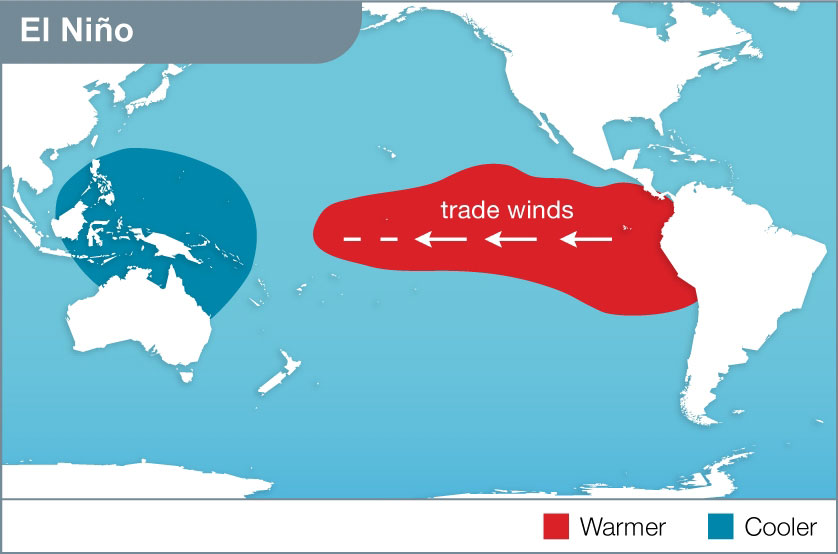Enso – El Niño Southern Oscillation
The El Niño Southern Oscillation, or ENSO, has a big influence on Victorian climate over winter and spring.
The Pacific Ocean trade winds blow from an easterly direction, pushing moist air towards Australia. This moist tropical air is a big source of rain across eastern Australia, including Victoria. But Enso's behaviour can vary from year to year.
During La Niña Enso chases greater amounts of moist tropical air across Australia. Many La Niña years have seen higher rainfall in Victoria during winter and spring.
During El Niño Enso changes his mind and drives warm moist air towards South America instead. El Niño years have often resulted in drier winter and spring periods for Victoria.
Each year climatologists follow Enso's behaviour providing us with a potential rainfall outlook for Victoria. So Enso is definitely an important dog to keep an eye on.
Key things to know about the El Niño Southern Oscillation (ENSO)
- Describes the position of warm and cool water, the strength of winds and atmospheric pressures in the Equatorial Pacific Ocean region.
- When oceans heat up, moisture evaporates into the atmosphere. Under the right conditions ENSO can deliver a lot of moisture to Australia which becomes available to fall as rain.
- ENSO is important for Victoria, especially during spring.
- Other weather processes, like cold fronts, help to trigger rainfall events.
- Three phases — El Niño, La Niña and Neutral help to describe the different states of ENSO.
La Niña (SOI positive)

Historically, La Niña years deliver more moisture to Australia, because warm waters gather closer to our east coast. Combined with increasing trade winds this provides more moisture in the atmosphere and directs it towards eastern Australia.
In the past La Niña years have been correlated with an increased chance of wetter springs.
El Niño (SOI negative)

During the El Niño phase warm waters head towards South America and trade winds are weakened. This results in less atmospheric moisture available for rain in Australia. In the past, El Niño years have been correlated with an increased chance of drier springs.
Where to go for more information
- Bureau of Meteorology ENSO wrap up for the latest updates on what's happening with Enso
- See a detailed analysis of La Niña and El Niño events on the Bureau of Meteorology website
- Victoria's Climate Science Report 2019 (Department of Energy, Environment and Climate Action)